Zhengyan Tong
Learning Continuous Depth Representation via Geometric Spatial Aggregator
Dec 07, 2022Abstract:Depth map super-resolution (DSR) has been a fundamental task for 3D computer vision. While arbitrary scale DSR is a more realistic setting in this scenario, previous approaches predominantly suffer from the issue of inefficient real-numbered scale upsampling. To explicitly address this issue, we propose a novel continuous depth representation for DSR. The heart of this representation is our proposed Geometric Spatial Aggregator (GSA), which exploits a distance field modulated by arbitrarily upsampled target gridding, through which the geometric information is explicitly introduced into feature aggregation and target generation. Furthermore, bricking with GSA, we present a transformer-style backbone named GeoDSR, which possesses a principled way to construct the functional mapping between local coordinates and the high-resolution output results, empowering our model with the advantage of arbitrary shape transformation ready to help diverse zooming demand. Extensive experimental results on standard depth map benchmarks, e.g., NYU v2, have demonstrated that the proposed framework achieves significant restoration gain in arbitrary scale depth map super-resolution compared with the prior art. Our codes are available at https://github.com/nana01219/GeoDSR.
Im2Oil: Stroke-Based Oil Painting Rendering with Linearly Controllable Fineness Via Adaptive Sampling
Sep 27, 2022
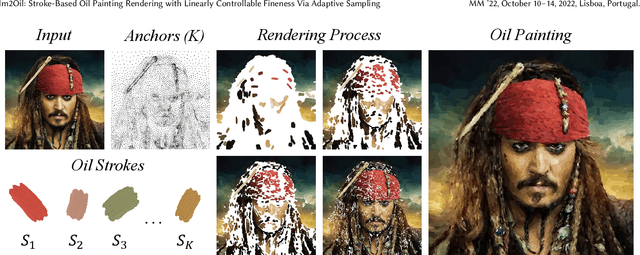
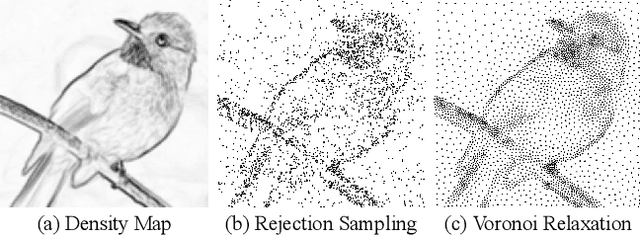

Abstract:This paper proposes a novel stroke-based rendering (SBR) method that translates images into vivid oil paintings. Previous SBR techniques usually formulate the oil painting problem as pixel-wise approximation. Different from this technique route, we treat oil painting creation as an adaptive sampling problem. Firstly, we compute a probability density map based on the texture complexity of the input image. Then we use the Voronoi algorithm to sample a set of pixels as the stroke anchors. Next, we search and generate an individual oil stroke at each anchor. Finally, we place all the strokes on the canvas to obtain the oil painting. By adjusting the hyper-parameter maximum sampling probability, we can control the oil painting fineness in a linear manner. Comparison with existing state-of-the-art oil painting techniques shows that our results have higher fidelity and more realistic textures. A user opinion test demonstrates that people behave more preference toward our oil paintings than the results of other methods. More interesting results and the code are in https://github.com/TZYSJTU/Im2Oil.
RainNet: A Large-Scale Dataset for Spatial Precipitation Downscaling
Dec 18, 2020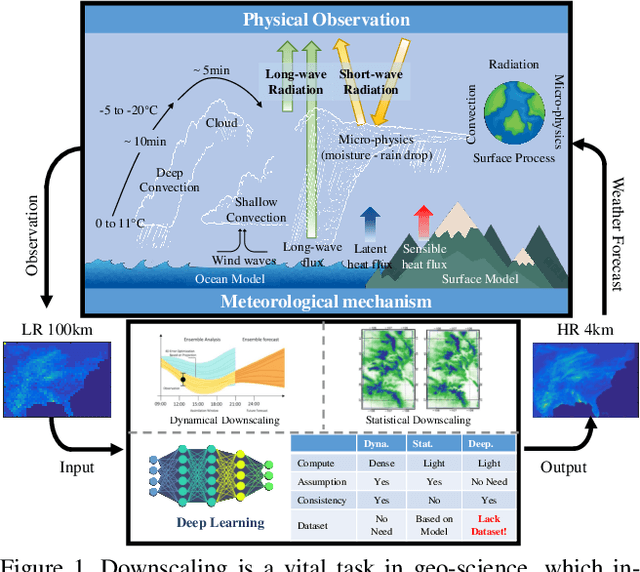
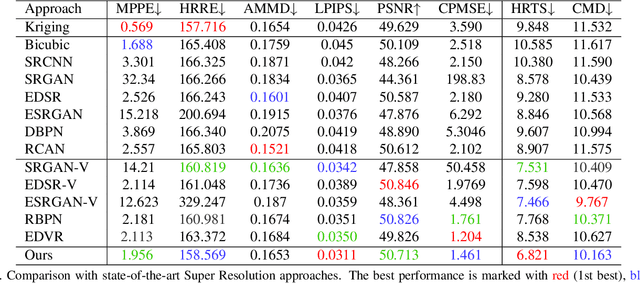
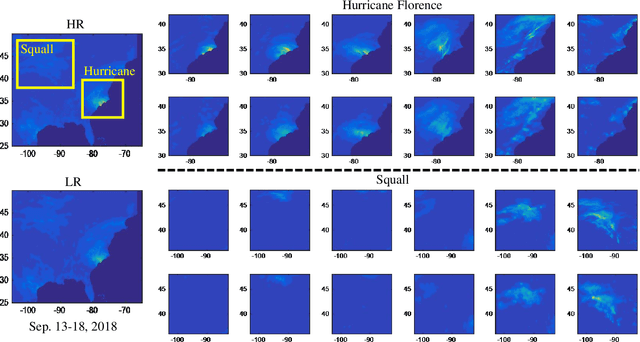

Abstract:Spatial Precipitation Downscaling is one of the most important problems in the geo-science community. However, it still remains an unaddressed issue. Deep learning is a promising potential solution for downscaling. In order to facilitate the research on precipitation downscaling for deep learning, we present the first REAL (non-simulated) Large-Scale Spatial Precipitation Downscaling Dataset, RainNet, which contains 62,424 pairs of low-resolution and high-resolution precipitation maps for 17 years. Contrary to simulated data, this real dataset covers various types of real meteorological phenomena (e.g., Hurricane, Squall, etc.), and shows the physical characters - Temporal Misalignment, Temporal Sparse and Fluid Properties - that challenge the downscaling algorithms. In order to fully explore potential downscaling solutions, we propose an implicit physical estimation framework to learn the above characteristics. Eight metrics specifically considering the physical property of the data set are raised, while fourteen models are evaluated on the proposed dataset. Finally, we analyze the effectiveness and feasibility of these models on precipitation downscaling task. The Dataset and Code will be available at https://neuralchen.github.io/RainNet/.
Sketch Generation with Drawing Process Guided by Vector Flow and Grayscale
Dec 16, 2020



Abstract:We propose a novel image-to-pencil translation method that could not only generate high-quality pencil sketches but also offer the drawing process. Existing pencil sketch algorithms are based on texture rendering rather than the direct imitation of strokes, making them unable to show the drawing process but only a final result. To address this challenge, we first establish a pencil stroke imitation mechanism. Next, we develop a framework with three branches to guide stroke drawing: the first branch guides the direction of the strokes, the second branch determines the shade of the strokes, and the third branch enhances the details further. Under this framework's guidance, we can produce a pencil sketch by drawing one stroke every time. Our method is fully interpretable. Comparison with existing pencil drawing algorithms shows that our method is superior to others in terms of texture quality, style, and user evaluation.
 Add to Chrome
Add to Chrome Add to Firefox
Add to Firefox Add to Edge
Add to Edge